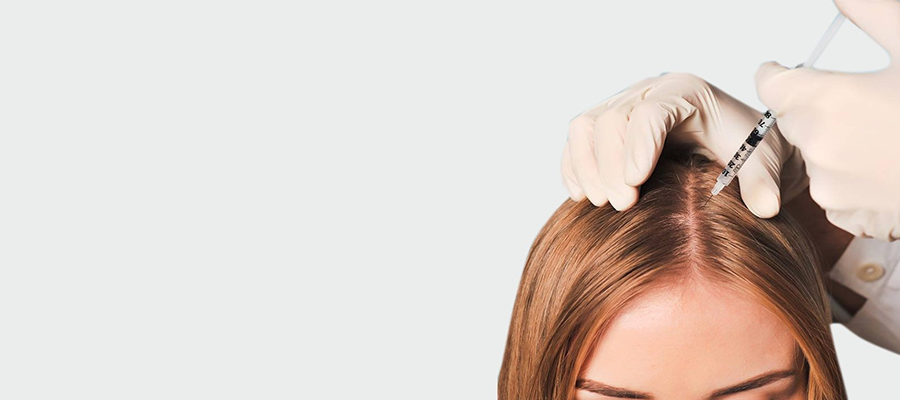
PRP stands for Platelet-Rich Plasma. It is a treatment that involves extracting a small amount of a person’s blood, processing it to concentrate the platelets, and then injecting the platelet-rich plasma back into the body. PRP is commonly used in medical and aesthetic procedures to promote healing, reduce inflammation, and stimulate tissue regeneration.

PRP hair treatment works by utilizing the regenerative properties of platelet-rich plasma (PRP) to stimulate hair growth and improve the overall health of the scalp. Here’s how the treatment typically works: 1. Blood extraction: A small amount of the patient’s blood is drawn, usually from the arm, similar to a regular blood test. 2. Centrifugation: The extracted blood is then placed in a centrifuge machine, which spins it at high speeds to separate the platelet-rich plasma from other components of the blood. 3. Preparation of PRP: The centrifugation process isolates the platelets and growth factors, resulting in a concentrated PRP solution. 4. Scalp numbing (optional): Before the PRP is applied, the scalp may be numbed with a local anesthetic to minimize any discomfort during the treatment. 5. PRP injection or application: The PRP solution is then injected directly into the scalp using small needles or applied topically to the scalp through micro-needling or other techniques. The PRP is strategically distributed across the scalp, targeting areas of hair loss or thinning. 6. Absorption and stimulation: Once the PRP is injected or applied, it is absorbed into the scalp, where the growth factors and platelets work to stimulate hair follicles, promote new hair growth, and improve the health of existing hair. The exact procedure and techniques used may vary depending on the clinic and the specific needs of the patient. It’s important to consult with a qualified medical professional who can assess your situation and provide personalized treatment options and recommendations.

PRP has several advantages when used in hair transplantation procedures. Here are some of the benefits:
It’s important to note that individual results may vary, and it’s best to consult with a qualified medical professional to determine if PRP is suitable for your specific needs.

The number of PRP sessions needed for hair transplantation can vary depending on various factors, including the individual’s specific condition and treatment goals. Typically, a series of PRP sessions are recommended to achieve optimal results. In general, most practitioners suggest an initial series of 3-4 PRP sessions, spaced 4-6 weeks apart. After the initial series, maintenance sessions may be recommended every 3-6 months to sustain the results. However, it’s important to note that the exact number of sessions can vary for each individual. It’s best to consult with a qualified medical professional who can assess your specific situation and provide personalized recommendations based on your needs and goals.